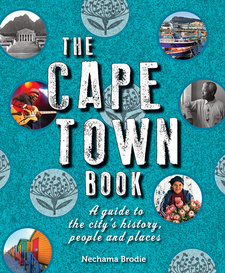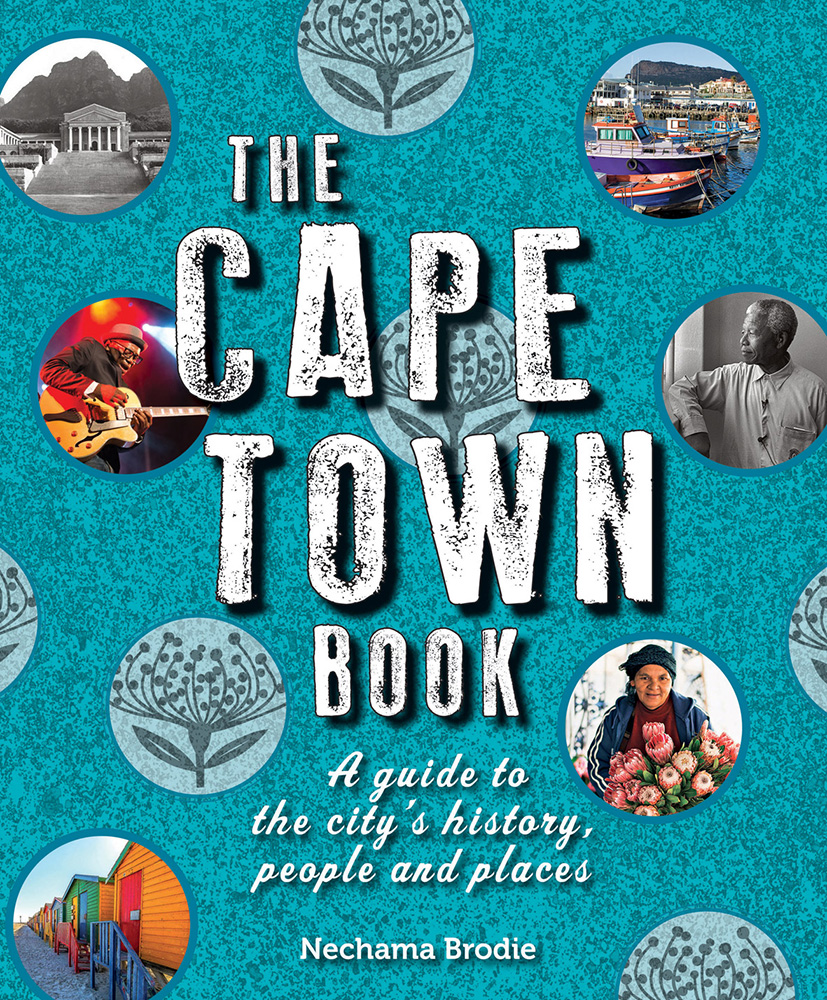The Cape Town Book: A guide to the city's history, people and places, by Nechama Brodie

The Cape Town Book: A guide to the city's history, people and places, by Nechama Brodie. Penguin Random House South Africa. Cape Town, South Africa 2015. ISBN 9781920545987 / ISBN 978-1-920545-98-7
Brodie, author of The Cape Town Book: A guide to the city's history, people and places, has delved deeply into the hidden past of Cape Town to emerge with a lucid and compelling account of South Africa’s mother city, its landscape and its people.
Cabo Tormentoso
Early European explorers knew the southern African Cape as Cabo Tormentoso, the Cape of Storms. These waters are still described as a 'zone of turbulent mixing', where the collision of ocean currents and weather systems coming off Antarctica conspire to create rugged weather and 'mean seas', rogue waves that have the power to topple supertankers. The Indian Ocean's warm Agulhas Current sweeps southward along the eastern and southern coast of Africa. In the Atlantic Ocean, the cold Benguela Current, the eastern flank of the South Atlantic Gyre, a massive anticyclonic current (which flows anticlockwise in the southern hemisphere), runs northwards along the west coast of southern Africa, reaching as far as Angola. At the point where the Agulhas Current runs into the flow of the Benguela and the eastward flow of the Antarctic Circumpolar Current, the Agulhas retroflects, or bends back on itself, returning water eastward into the Indian Ocean. This is known as the Agulhas Return Current, and it releases massive rings, or eddies, called Agulhas Rings, into the southern Atlantic. The Agulhas Current and its retroflection was one of the many factors that made it difficult for early sailing vessels to circumnavigate the southern African coast. Venturing out too far into the open ocean meant being exposed to the turbulent weather; staying too close to shore meant sailing against a strong current. When Vasco da Gama rounded what he called the Cabo da Boa Esperanqa (Cape of Good Hope) in 1497, the ships' log noted a strong southward current near Algoa Bay (Port Elizabeth) that set back the flotilla for three days.
PLACES TO VISIT
The Meisho Maru, wrecked in 1982 off Cape Agulhas. Cape Agulhas, around 220 kilometres east of Cape Town, is generally the accepted 'dividing line', where the Indian and Atlantic oceans meet off the southern coast of Africa. The Agulhas National Park (sanparks.co.za) is a coastal-plain reserve covering nearly 21 000 hectares. To mark its historical maritime significance, the area boasts a lighthouse museum and a shipwreck graveyard. These days, the area is better known as a destination for whale spotting, birdwatching and its flowers. For information about attractions and activities in the Agulhas area, go to the Cape Agulhas Tourism website at discovercapeagulhas.co.za.
The Benguela Upwelling
The second important effect of the convergence of the ocean currents is a phenomenon known as the Benguela Upwelling, which began 10 to five million years ago. The upwelling occurs when strong winds drive surface water offshore, and it is replaced by water that 'wells up' from depths of 200 to 300 metres. The rising water is colder, and rich in nutrients like nitrates and phosphates. This provides a reliable food source for phytoplankton, the base of the marine food chain, and supports an abundant fish ecosystem. The Benguela Upwelling did more than lay the foundations for one of the world's richest fishing grounds. Botanists have drawn a direct correlation between marine-driven climate change and the development and speciation of terrestrial flora.6 Between 10 million and six million years ago, a period consistent with the development of the Benguela Upwelling system, tropical pollen types began to disappear from the southwestern African coast. As the afromontane forests vanished, tropical grasslands and thickets were gradually replaced by vegetation better suited to the semi-arid, summer-drought climate, known as fynbos. [...]
This is an excerpt from The Cape Town Book: A guide to the city's history, people and places, by Nechama Brodie.
Title: The Cape Town Book
Subtitle: A guide to the city's history, people and places
Author: Nechama Brodie
Genre: City Guide
Publisher: Penguin Random House South Africa
Cape Town, South Africa 2015
ISBN 9781920545987 / ISBN 978-1-920545-98-7
Softcover, 22 x 26 cm, 328 pages, 700 illustrations, 15 maps
Brodie, Nechama im Namibiana-Buchangebot
The Cape Town Book: A guide to the city's history, people and places
The Cape Town Book is a beautifully illustrated, information-rich guide to the city's history, people and places.

